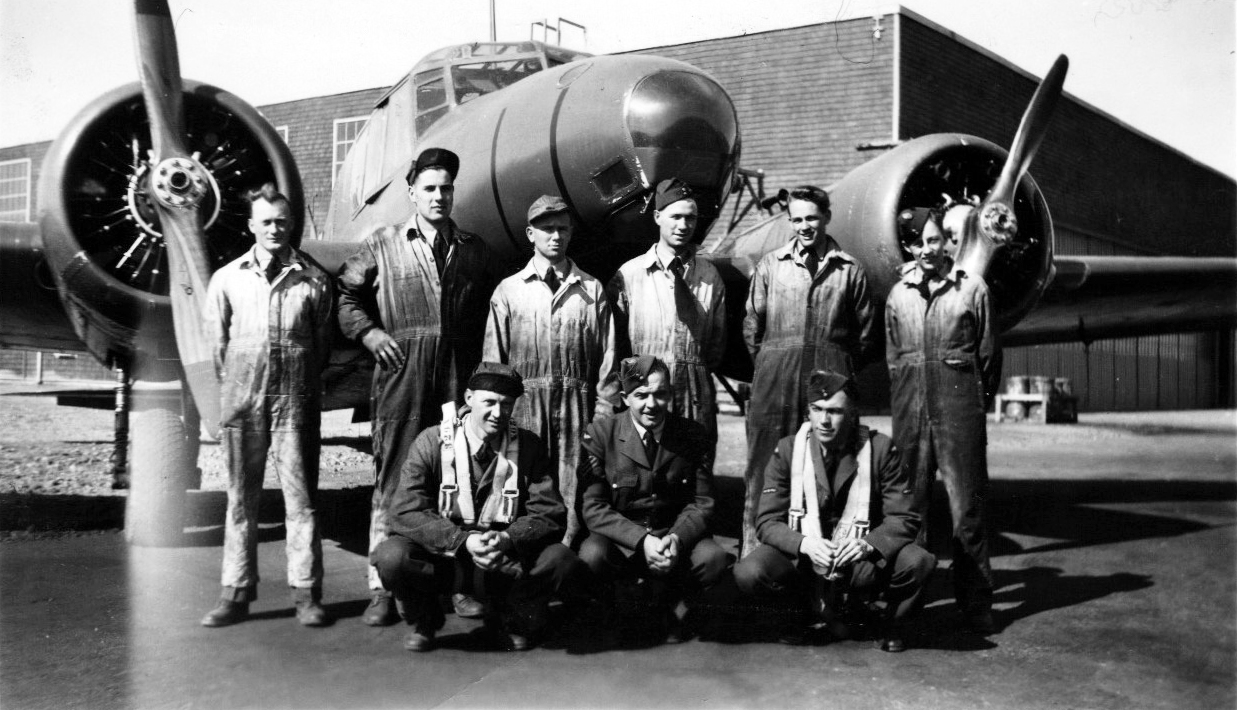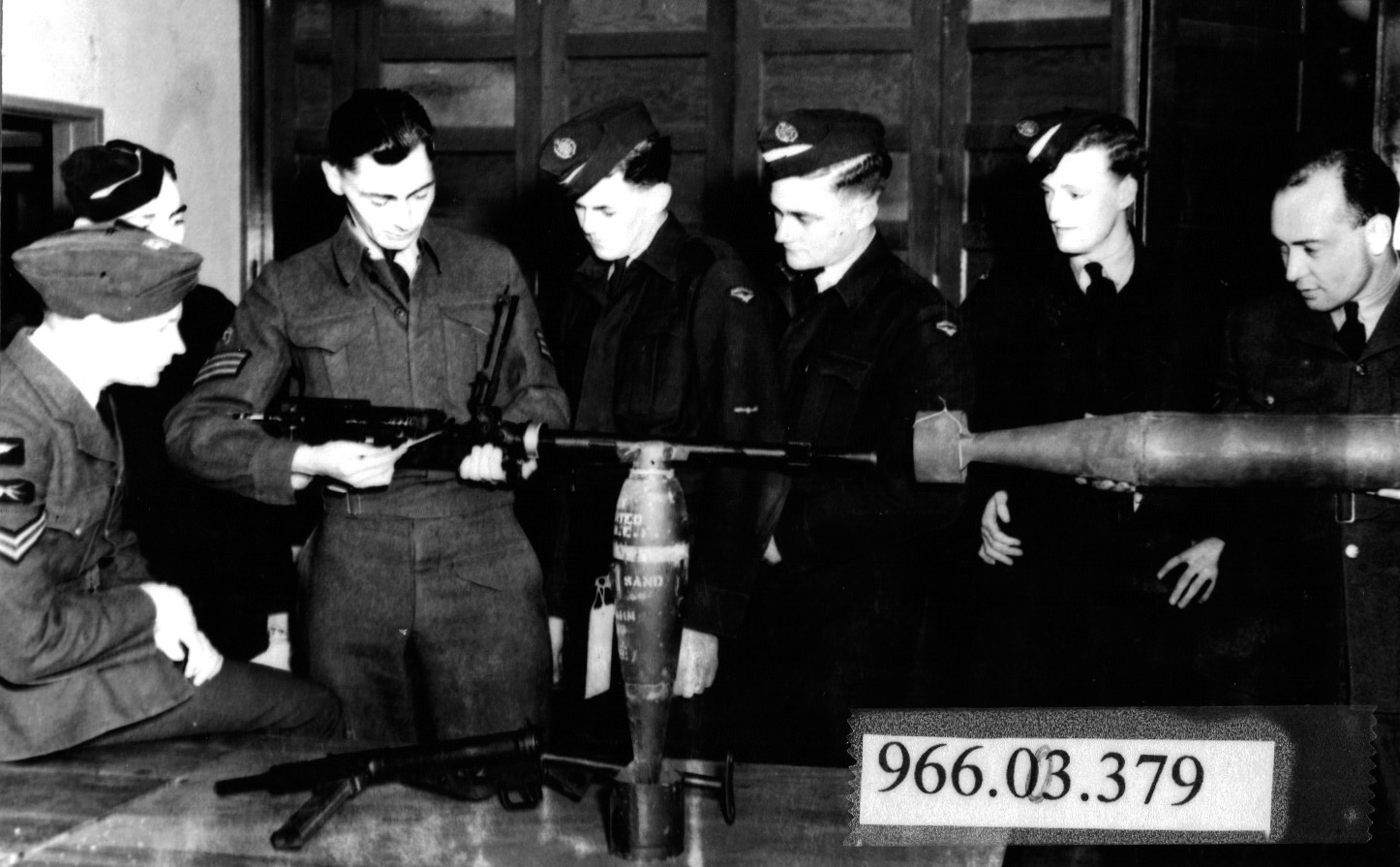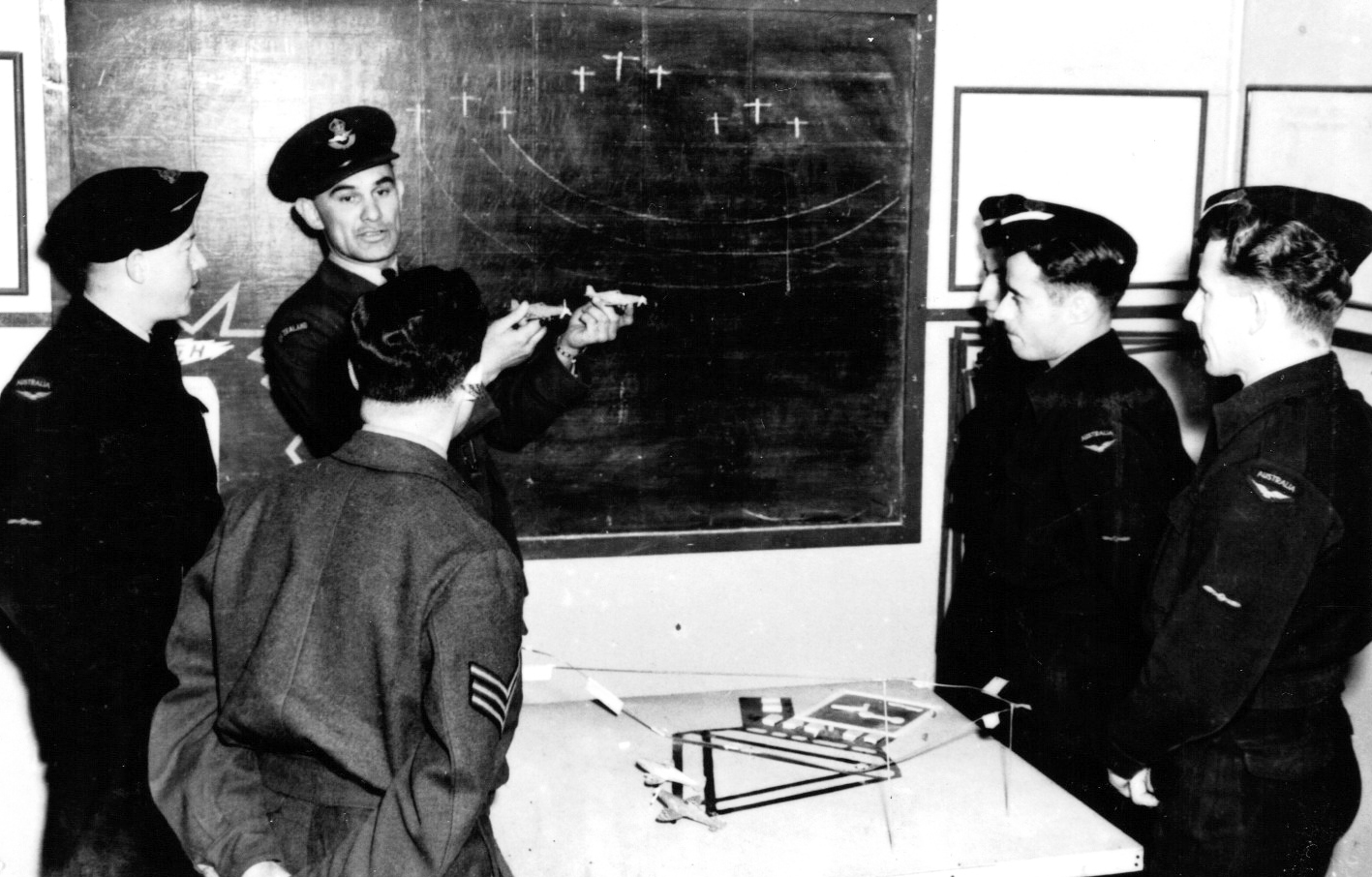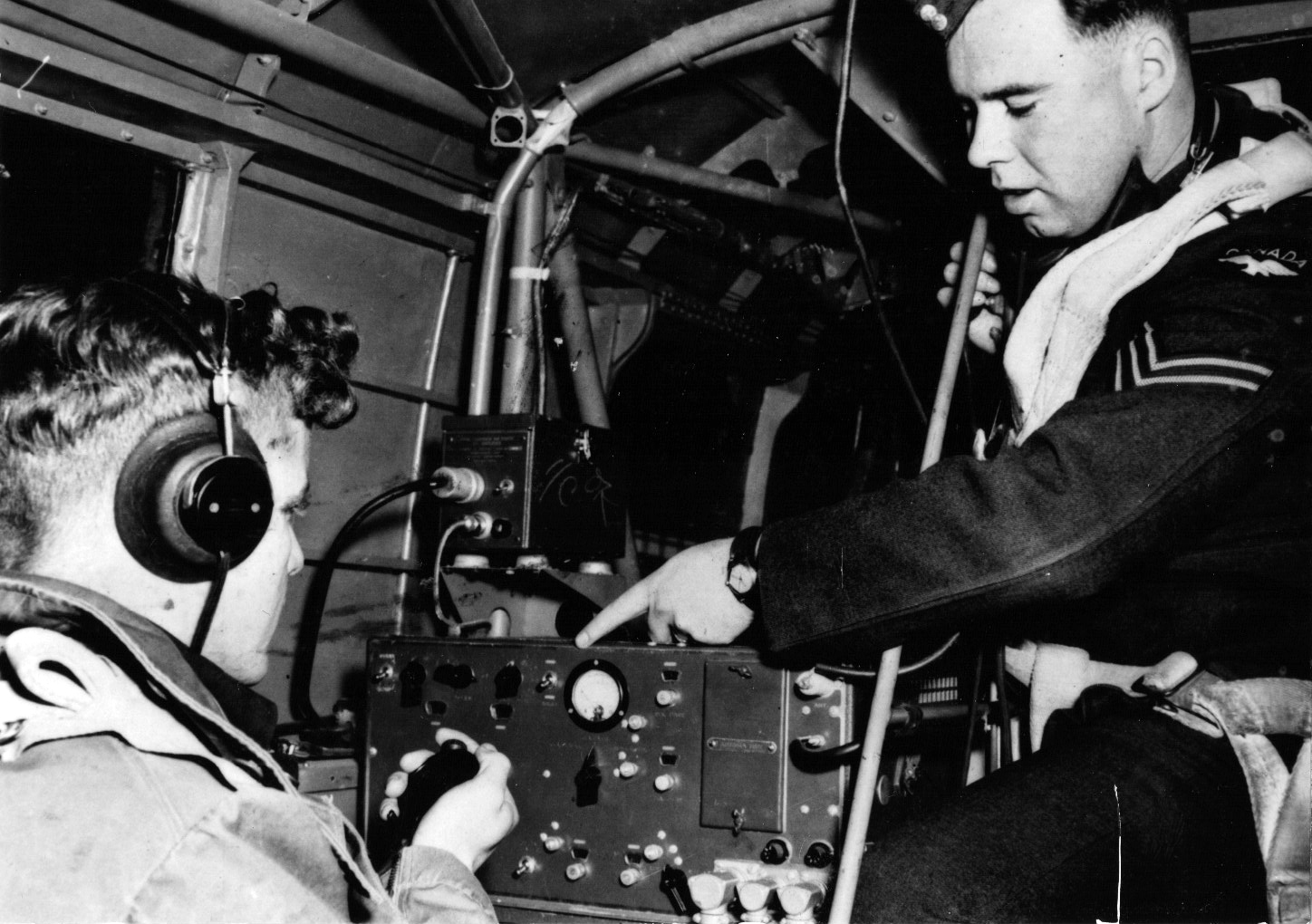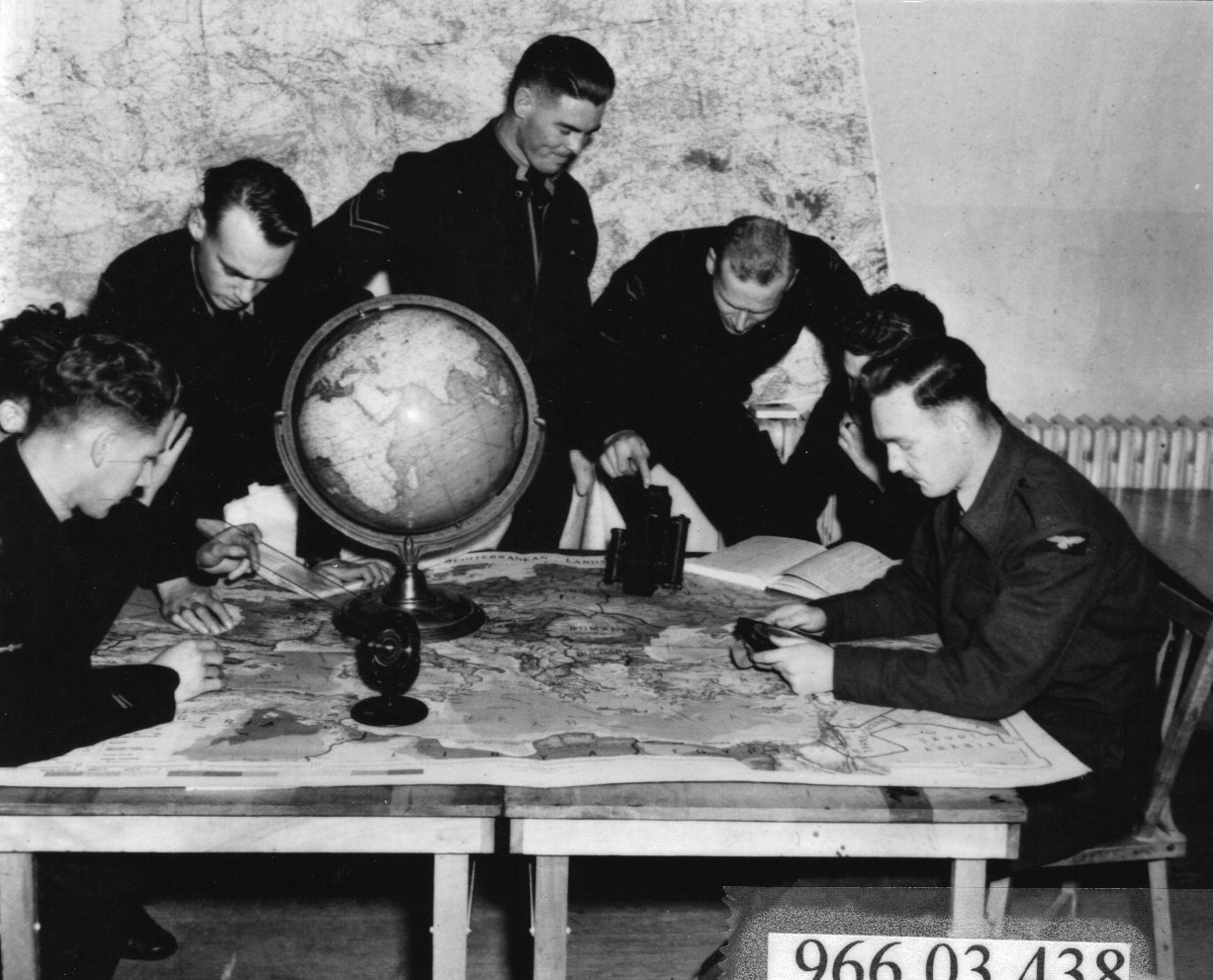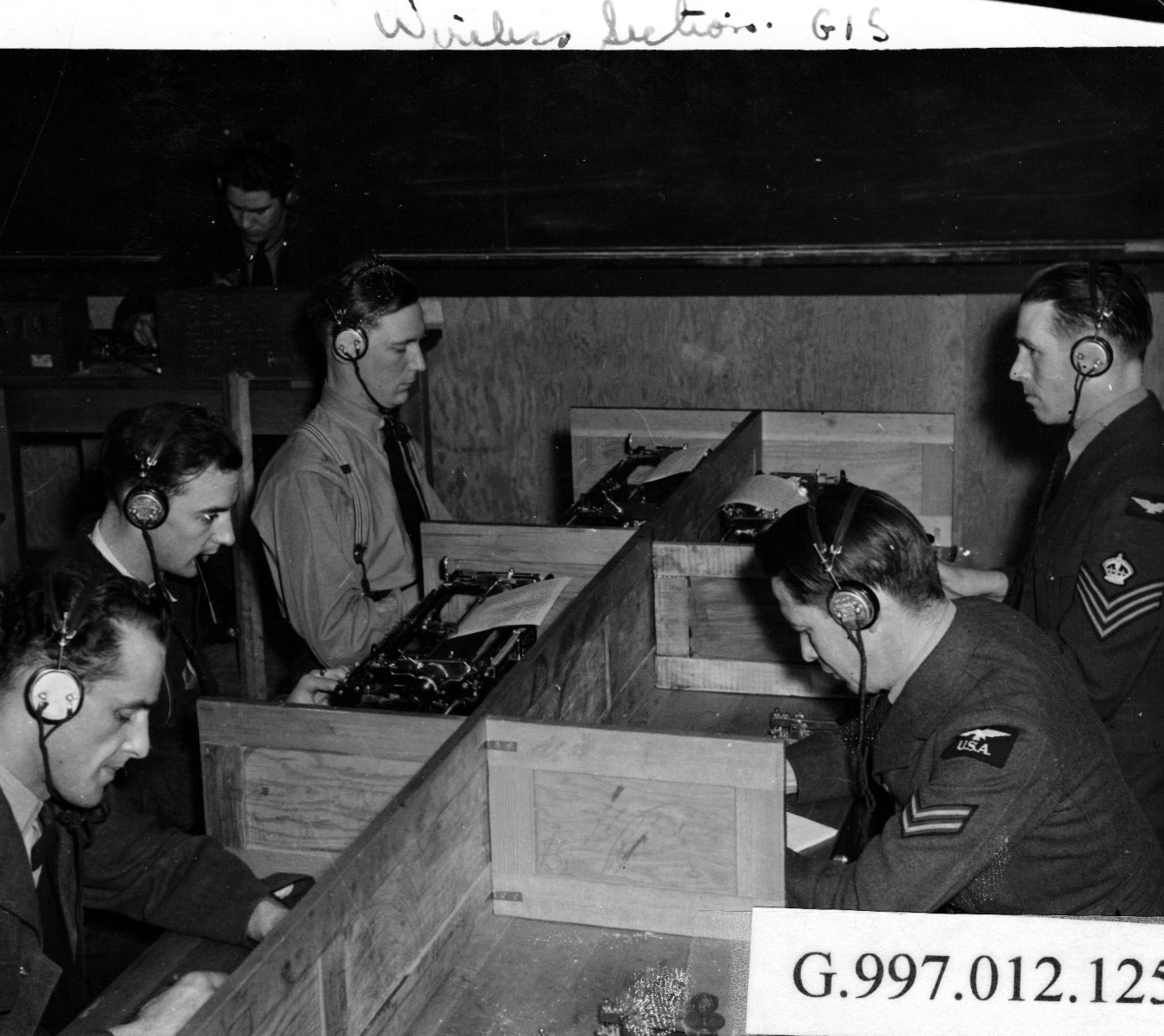Learning to Fly WWII Airplanes
Pilot and aircrew training began long before they arrived at the Service Flying Training School in Claresholm.
The Manning Depot
After acceptance into the British Commonwealth Air Training Program, new recruits reported to one of seven Manning Depots located across the country. At the Manning Depot, each recruit would obtain his uniform and kit. He would then receive 4 – 5 weeks of military and physical training, and of course, learn how to march and salute!
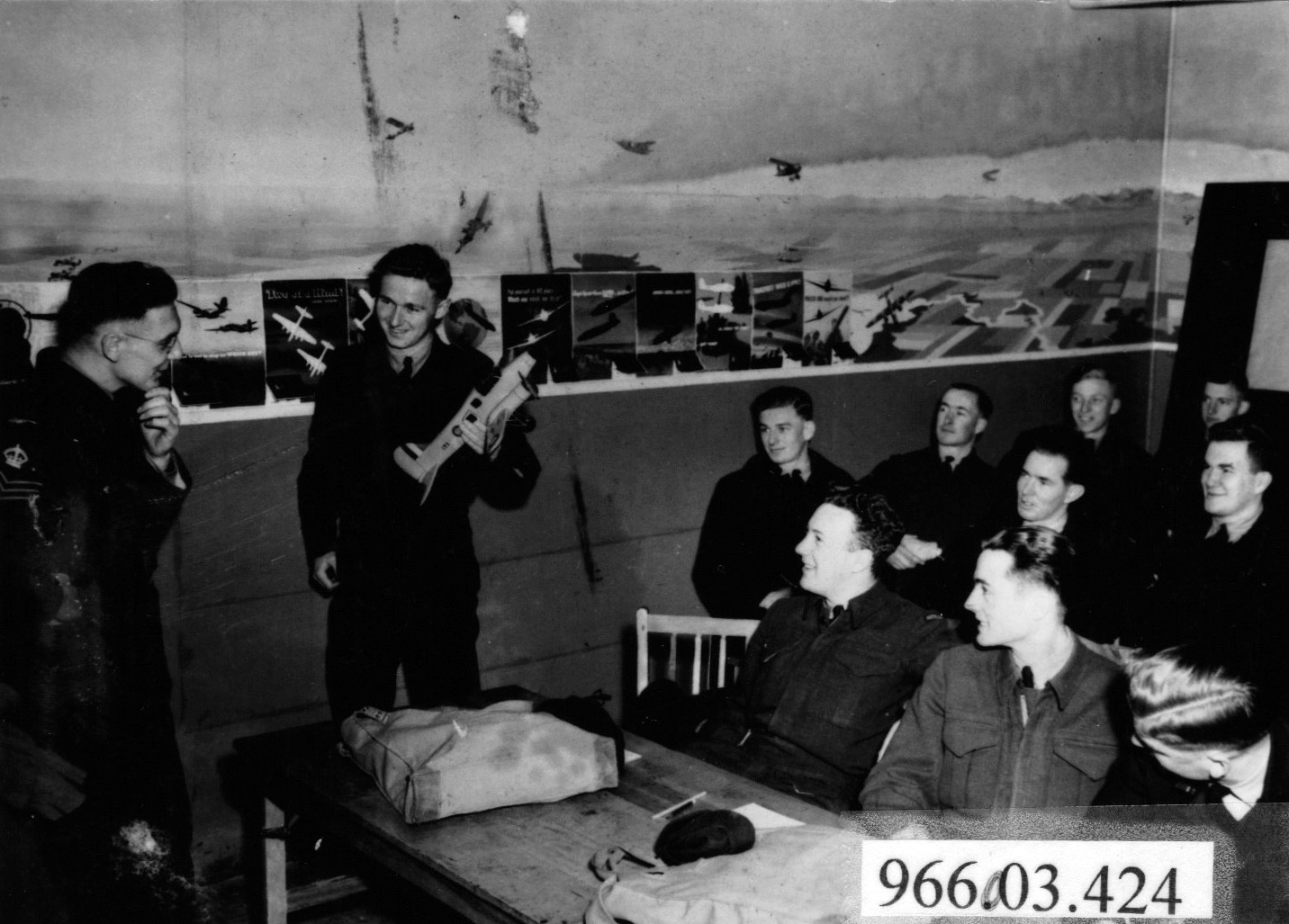
Aircraft Recognition Training: Plane identification lectures and camaraderie. Student holding an Anson.
While at the Manning Depot, each recruit took aptitude testing to determine which stream of training he would move forward in. Some would carry on to pilot or aircrew training, while others would move on as all-important ground crew trainees.
After the Manning Depot, pilot and aircrew recruits started on their 26 – 28 week training programs, moving to bases and schools across the country as their training progressed.
Initial Training School
The first phase of training for pilots and aircrew was Initial Training School (ITS) at one of seven locations across the country. Initial Training School consisted of a four-week long ground course in flying fundamentals.
Elementary Flying Training School
Elementary Flying Training School (EFTS) was the second phase of training, where recruits finally got to take to the air. This phase of training lasted eight weeks. Each recruit received 50 hours of basic flying instruction. There were 32 Elementary Flying Training Schools active in the BCATP throughout WWII.
Service Flying Training School
Once recruits mastered basic flying skills, they moved on to the next phase of training – Service Flying Training School (SFTS). This portion of the course lasted 16 weeks. There were 29 Service Flying Training Schools set up across the country, with approximately 2/3 of these located in the prairie provinces, including No. 15 SFTS at Claresholm, Alberta.
The course at Claresholm consisted of up to 100 hours of in-air flying time. This allowed students to practice take-offs and landings in all weather conditions, aerobatics, navigation and night flying.
However, all of this was initially practiced safely on the ground in a flight simulator called the Link Trainer.


